Yuanbo Zhou
ScribbleVS: Scribble-Supervised Medical Image Segmentation via Dynamic Competitive Pseudo Label Selection
Nov 15, 2024



Abstract:In clinical medicine, precise image segmentation can provide substantial support to clinicians. However, achieving such precision often requires a large amount of finely annotated data, which can be costly. Scribble annotation presents a more efficient alternative, boosting labeling efficiency. However, utilizing such minimal supervision for medical image segmentation training, especially with scribble annotations, poses significant challenges. To address these challenges, we introduce ScribbleVS, a novel framework that leverages scribble annotations. We introduce a Regional Pseudo Labels Diffusion Module to expand the scope of supervision and reduce the impact of noise present in pseudo labels. Additionally, we propose a Dynamic Competitive Selection module for enhanced refinement in selecting pseudo labels. Experiments conducted on the ACDC and MSCMRseg datasets have demonstrated promising results, achieving performance levels that even exceed those of fully supervised methodologies. The codes of this study are available at https://github.com/ortonwang/ScribbleVS.
Synergy-Guided Regional Supervision of Pseudo Labels for Semi-Supervised Medical Image Segmentation
Nov 07, 2024Abstract:Semi-supervised learning has received considerable attention for its potential to leverage abundant unlabeled data to enhance model robustness. Pseudo labeling is a widely used strategy in semi supervised learning. However, existing methods often suffer from noise contamination, which can undermine model performance. To tackle this challenge, we introduce a novel Synergy-Guided Regional Supervision of Pseudo Labels (SGRS-Net) framework. Built upon the mean teacher network, we employ a Mix Augmentation module to enhance the unlabeled data. By evaluating the synergy before and after augmentation, we strategically partition the pseudo labels into distinct regions. Additionally, we introduce a Region Loss Evaluation module to assess the loss across each delineated area. Extensive experiments conducted on the LA dataset have demonstrated superior performance over state-of-the-art techniques, underscoring the efficiency and practicality of our framework.
DIffSteISR: Harnessing Diffusion Prior for Superior Real-world Stereo Image Super-Resolution
Aug 15, 2024



Abstract:We introduce DiffSteISR, a pioneering framework for reconstructing real-world stereo images. DiffSteISR utilizes the powerful prior knowledge embedded in pre-trained text-to-image model to efficiently recover the lost texture details in low-resolution stereo images. Specifically, DiffSteISR implements a time-aware stereo cross attention with temperature adapter (TASCATA) to guide the diffusion process, ensuring that the generated left and right views exhibit high texture consistency thereby reducing disparity error between the super-resolved images and the ground truth (GT) images. Additionally, a stereo omni attention control network (SOA ControlNet) is proposed to enhance the consistency of super-resolved images with GT images in the pixel, perceptual, and distribution space. Finally, DiffSteISR incorporates a stereo semantic extractor (SSE) to capture unique viewpoint soft semantic information and shared hard tag semantic information, thereby effectively improving the semantic accuracy and consistency of the generated left and right images. Extensive experimental results demonstrate that DiffSteISR accurately reconstructs natural and precise textures from low-resolution stereo images while maintaining a high consistency of semantic and texture between the left and right views.
ASteISR: Adapting Single Image Super-resolution Pre-trained Model for Efficient Stereo Image Super-resolution
Jul 04, 2024Abstract:Despite advances in the paradigm of pre-training then fine-tuning in low-level vision tasks, significant challenges persist particularly regarding the increased size of pre-trained models such as memory usage and training time. Another concern often encountered is the unsatisfying results yielded when directly applying pre-trained single-image models to multi-image domain. In this paper, we propose a efficient method for transferring a pre-trained single-image super-resolution (SISR) transformer network to the domain of stereo image super-resolution (SteISR) through a parameter-efficient fine-tuning (PEFT) method. Specifically, we introduce the concept of stereo adapters and spatial adapters which are incorporated into the pre-trained SISR transformer network. Subsequently, the pre-trained SISR model is frozen, enabling us to fine-tune the adapters using stereo datasets along. By adopting this training method, we enhance the ability of the SISR model to accurately infer stereo images by 0.79dB on the Flickr1024 dataset. This method allows us to train only 4.8% of the original model parameters, achieving state-of-the-art performance on four commonly used SteISR benchmarks. Compared to the more complicated full fine-tuning approach, our method reduces training time and memory consumption by 57% and 15%, respectively.
Real-Time 4K Super-Resolution of Compressed AVIF Images. AIS 2024 Challenge Survey
Apr 25, 2024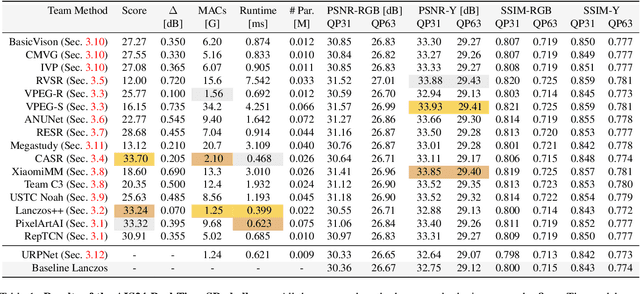

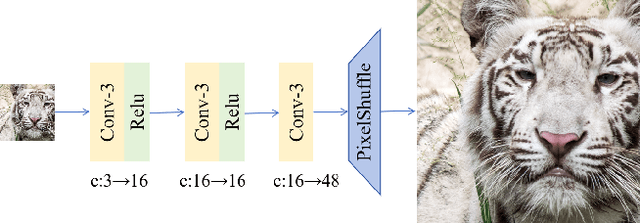
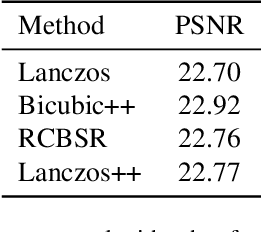
Abstract:This paper introduces a novel benchmark as part of the AIS 2024 Real-Time Image Super-Resolution (RTSR) Challenge, which aims to upscale compressed images from 540p to 4K resolution (4x factor) in real-time on commercial GPUs. For this, we use a diverse test set containing a variety of 4K images ranging from digital art to gaming and photography. The images are compressed using the modern AVIF codec, instead of JPEG. All the proposed methods improve PSNR fidelity over Lanczos interpolation, and process images under 10ms. Out of the 160 participants, 25 teams submitted their code and models. The solutions present novel designs tailored for memory-efficiency and runtime on edge devices. This survey describes the best solutions for real-time SR of compressed high-resolution images.
NTIRE 2024 Challenge on Low Light Image Enhancement: Methods and Results
Apr 22, 2024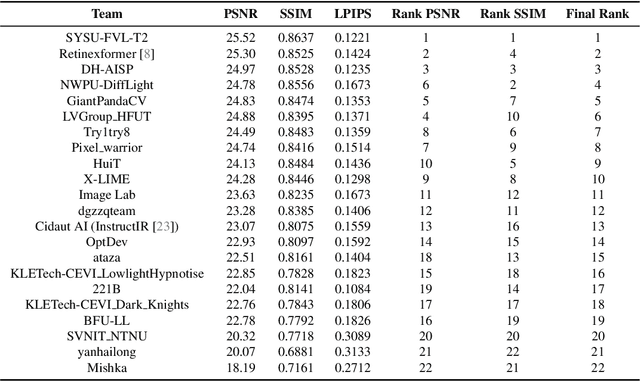

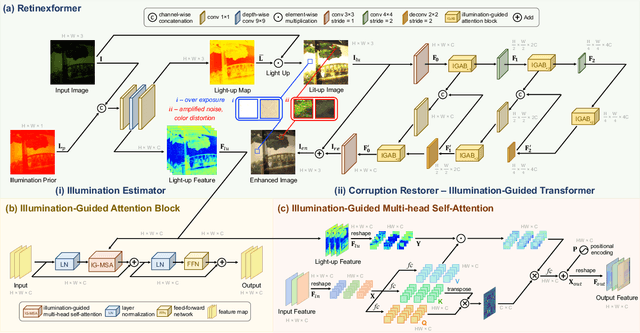

Abstract:This paper reviews the NTIRE 2024 low light image enhancement challenge, highlighting the proposed solutions and results. The aim of this challenge is to discover an effective network design or solution capable of generating brighter, clearer, and visually appealing results when dealing with a variety of conditions, including ultra-high resolution (4K and beyond), non-uniform illumination, backlighting, extreme darkness, and night scenes. A notable total of 428 participants registered for the challenge, with 22 teams ultimately making valid submissions. This paper meticulously evaluates the state-of-the-art advancements in enhancing low-light images, reflecting the significant progress and creativity in this field.
Toward Real World Stereo Image Super-Resolution via Hybrid Degradation Model and Discriminator for Implied Stereo Image Information
Dec 13, 2023Abstract:Real-world stereo image super-resolution has a significant influence on enhancing the performance of computer vision systems. Although existing methods for single-image super-resolution can be applied to improve stereo images, these methods often introduce notable modifications to the inherent disparity, resulting in a loss in the consistency of disparity between the original and the enhanced stereo images. To overcome this limitation, this paper proposes a novel approach that integrates a implicit stereo information discriminator and a hybrid degradation model. This combination ensures effective enhancement while preserving disparity consistency. The proposed method bridges the gap between the complex degradations in real-world stereo domain and the simpler degradations in real-world single-image super-resolution domain. Our results demonstrate impressive performance on synthetic and real datasets, enhancing visual perception while maintaining disparity consistency. The complete code is available at the following \href{https://github.com/fzuzyb/SCGLANet}{link}.
Pseudo Label-Guided Data Fusion and Output Consistency for Semi-Supervised Medical Image Segmentation
Nov 17, 2023Abstract:Supervised learning algorithms based on Convolutional Neural Networks have become the benchmark for medical image segmentation tasks, but their effectiveness heavily relies on a large amount of labeled data. However, annotating medical image datasets is a laborious and time-consuming process. Inspired by semi-supervised algorithms that use both labeled and unlabeled data for training, we propose the PLGDF framework, which builds upon the mean teacher network for segmenting medical images with less annotation. We propose a novel pseudo-label utilization scheme, which combines labeled and unlabeled data to augment the dataset effectively. Additionally, we enforce the consistency between different scales in the decoder module of the segmentation network and propose a loss function suitable for evaluating the consistency. Moreover, we incorporate a sharpening operation on the predicted results, further enhancing the accuracy of the segmentation. Extensive experiments on three publicly available datasets demonstrate that the PLGDF framework can largely improve performance by incorporating the unlabeled data. Meanwhile, our framework yields superior performance compared to six state-of-the-art semi-supervised learning methods. The codes of this study are available at https://github.com/ortonwang/PLGDF.
PCDAL: A Perturbation Consistency-Driven Active Learning Approach for Medical Image Segmentation and Classification
Jun 29, 2023Abstract:In recent years, deep learning has become a breakthrough technique in assisting medical image diagnosis. Supervised learning using convolutional neural networks (CNN) provides state-of-the-art performance and has served as a benchmark for various medical image segmentation and classification. However, supervised learning deeply relies on large-scale annotated data, which is expensive, time-consuming, and even impractical to acquire in medical imaging applications. Active Learning (AL) methods have been widely applied in natural image classification tasks to reduce annotation costs by selecting more valuable examples from the unlabeled data pool. However, their application in medical image segmentation tasks is limited, and there is currently no effective and universal AL-based method specifically designed for 3D medical image segmentation. To address this limitation, we propose an AL-based method that can be simultaneously applied to 2D medical image classification, segmentation, and 3D medical image segmentation tasks. We extensively validated our proposed active learning method on three publicly available and challenging medical image datasets, Kvasir Dataset, COVID-19 Infection Segmentation Dataset, and BraTS2019 Dataset. The experimental results demonstrate that our PCDAL can achieve significantly improved performance with fewer annotations in 2D classification and segmentation and 3D segmentation tasks. The codes of this study are available at https://github.com/ortonwang/PCDAL.
AIM 2020 Challenge on Real Image Super-Resolution: Methods and Results
Sep 25, 2020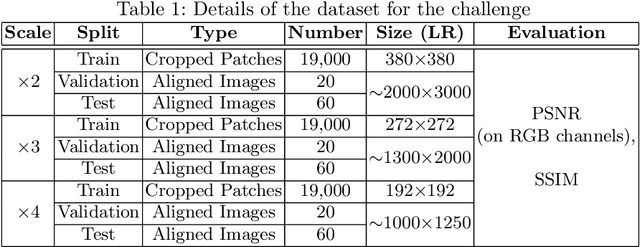
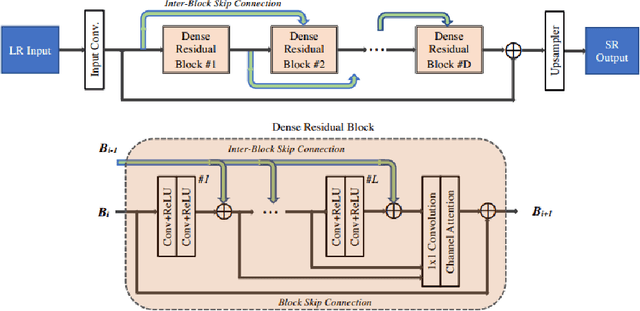
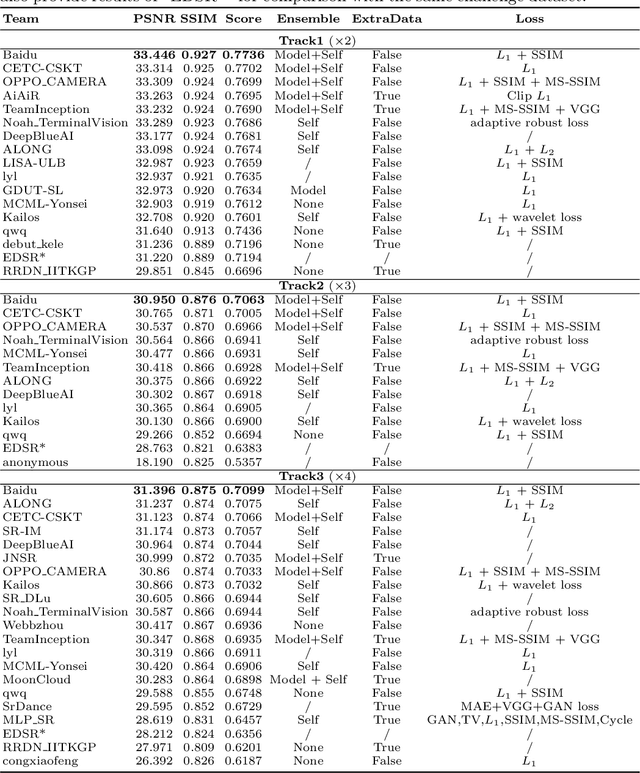
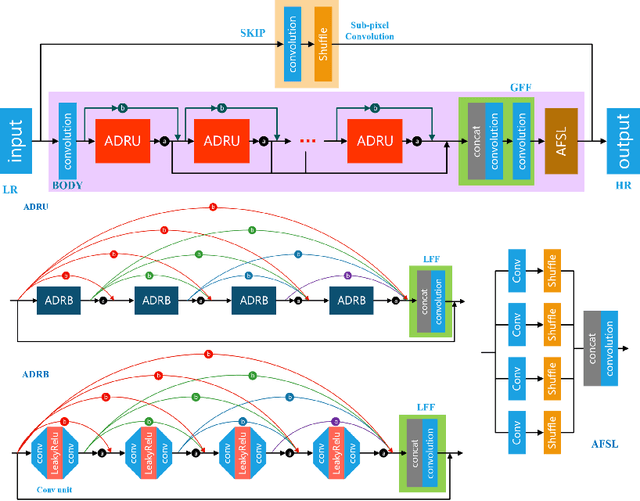
Abstract:This paper introduces the real image Super-Resolution (SR) challenge that was part of the Advances in Image Manipulation (AIM) workshop, held in conjunction with ECCV 2020. This challenge involves three tracks to super-resolve an input image for $\times$2, $\times$3 and $\times$4 scaling factors, respectively. The goal is to attract more attention to realistic image degradation for the SR task, which is much more complicated and challenging, and contributes to real-world image super-resolution applications. 452 participants were registered for three tracks in total, and 24 teams submitted their results. They gauge the state-of-the-art approaches for real image SR in terms of PSNR and SSIM.
 Add to Chrome
Add to Chrome Add to Firefox
Add to Firefox Add to Edge
Add to Edge